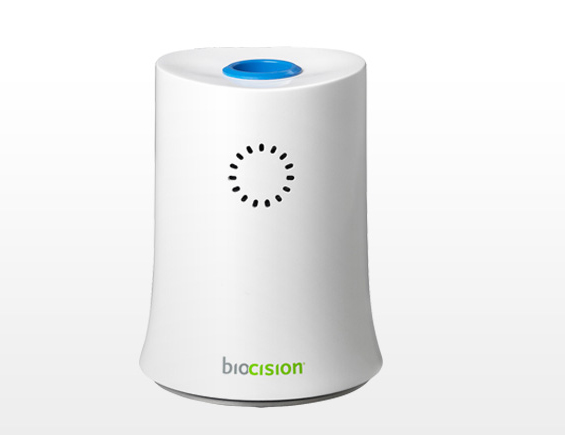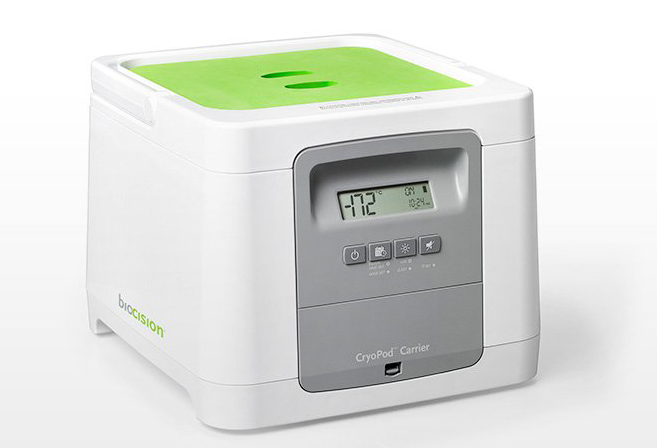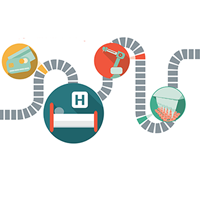Cell Therapy: Bridging the Gap from Production to Patients
Cell Gene Therapy Insights 2016; 2(2), 255-261.
10.18609/cgti.2016.024
INTEGRATION OF MANUFACTURING & DELIVERY INTO HEALTHCARE
You work with leading groups within academia and industry – from these interactions do you get a sense of any major differences in what they perceive as the key translational challenges for cell therapies?
The two main translational challenges in cell therapy are similar to any other human therapy: showing safety and efficacy in patients, and creating a viable supply chain for commercialization. Cell therapies have a track record of being generally safe, with efficacy measurements being the primary challenge. Most importantly, because cell therapies are “live therapies” with complex product characteristics, creating a viable, reliable supply chain can be a daunting task.
Academic research hospitals, which have pioneered cell therapy treatments (think bone marrow and cord blood transplants), worry most about the translational challenge of demonstrating efficacy and benefit to a sick patient. In these academic institutions, the technical expertise for cell handling and cell manipulation has long been established and is buttressed with institute-specific standard operating procedure guidelines.
Industry also shares the challenge of showing efficacy of their cell therapies, but the bar is even higher: they have the translational challenges of creating a supply chain for commercialization to a much broader market as well as passing typical drug regulatory body scrutiny. This means that industry must take a complex cell therapy and provide a reproducible and cost-effective manufacturing process, a clear quality control and acceptance plan, traceable and scalable logistics, and de-risked point-of-care processes.
Undoubtedly there’s a real sense of optimism and momentum building in the sector. Do you feel this is being mirrored in the pace of developments in downstream processing to move these therapies towards the clinic?
There is no doubt that the efficacy of anti-cancer therapies such as CAR-T cell therapies has been nothing less than astonishing. Interestingly, innovation in the downstream processing and logistics has been lagging these impressive improvements in therapeutic efficacy. This lag is partly due to the fact that pharmaceutical and biotech companies have not historically been in the cell therapy field and have no existing framework for manufacturing or logistics compared to the frameworks for small molecule therapeutics or standard biologics that have been in place for some time.
Because manufacturing processes are critical bottlenecks for generating clinical trial and commercial material, most companies have spent the last several years improving and innovating around their manufacturing – creating closed processes, improving yields, and reducing variability, for example. Many are only now getting to the logistics of moving therapies from the manufacturing site to clinical sites. Major downstream processing steps – washing and volume reduction, vessel type and cryopreservation method, labelling for worldwide distribution, transport, and thawing – are now scrutinized with more urgency. Novel technologies and approaches are taking root in all of these procedures, from automated cell processing systems that strictly follow Good Manufacturing Process regulations at the start of the pipeline to optimized and safe solid-state thawing instruments such as BioCision’s ThawSTAR® Point-of-Care Thawing Platform at the finish line.
 BioCision’s ThawSTAR® Point-of-Care Thawing Platform.
BioCision’s ThawSTAR® Point-of-Care Thawing Platform.
Cell therapy companies have been slowly realizing that the logistics for a “live cell” therapy are even more complex than those for a refrigerated vaccine, which until now had been considered one of the most difficult supply chain challenges. As an example, the downstream handling of cryopreserved cell therapies usually requires strict maintenance of cryogenic temperatures below -150°C at any time after cryopreservation. Initially, this may not seem like a big deal – but it becomes more complex when one considers the nitty-gritty details. Transport processes – both long (such as from the manufacturing site to the point-of-care facility) and short (such as from storage to shipment containers) are crucial stages where potentially detrimental temperature fluctuations can occur. The cell therapy community has now honed in on these potential weak links in the cold chain and developed solutions that minimize the risk of such fluctuations. One example of improved technologies is the portable CryoPod™ Carrier from BioCision, which stores specimens at below -150°C for up to 4 hours and automatically tracks temperature conditions. Technological solutions such as this are now in greater demand as cellular therapy products and applications expand. Overall, we are now starting to observe an upward trend in the speed at which innovations addressing downstream processes are being developed thus catching up with advances in therapy manufacturing.
From your experience, at what stage do cell therapy companies typically start to consider these downstream issues?
We now see more and more cell therapy companies thinking through the entire process early in their clinical development cycle, that is, during final process development and ramp-up for Phase 1 trials. This is largely a result of a more mature field where more recent entrants are learning from the mistakes and successes of first movers. In addition, there has been an evolution of the contract manufacturing market for cell therapies, led by companies such as Lonza, that enables therapeutic companies to take advantage of improved manufacturing and logistics processes.
[su_pullquote align=”right”]By and large, we find that all companies, big and small, have become smarter in considering the entire production process.[/su_pullquote]
However, many companies are still balancing investment in process versus success. Smaller companies don’t want to invest in too much logistical framework until their therapies are further along in clinical development, and thus delay broad logistical planning until their product is entering Phase 2 or 3. Larger cell therapy companies with bigger budgets and many trials see an enormous benefit to improving their logistics early in the process so that they can seamlessly move into commercialization. In the end, the investment decisions of a cell therapy enterprise are based on multiple factors, including the number of sites dispensing the therapy once commercialized, the logicstics of delivery (e.g., fresh or cryopreserved) and the amount available. But, by and large, we find that all companies, big and small, have become smarter in considering the entire production process.
With centralized manufacturing of cell therapies, what are the key considerations in managing the movement of a patient’s cells from the clinic/hospital through to the manufacturing facility and then back into the patient?
Two major considerations apply to both transport directions – the aforementioned requirement to keep the cells in the proper environment, (e.g., at ultra-low temperatures at all times) and a reliable automated tracking system to ensure proper allocation and distribution of the appropriate therapy to the right patient. A chain-of-custody mix-up would be disastrous and must be avoided at all cost, so sample tracking needs to be virtually error-proof. Tracking and secondary labelling systems, therefore, must unequivocally verify the source and chain of custody of every sample in the therapy manufacturing process.
[su_pullquote align=”right”]A chain-of-custody mix-up would be disastrous and must be avoided at all cost, so sample tracking needs to be virtually error-proof.[/su_pullquote]
In addition, standardized quality assurance programs must be implemented. Prior to transporting harvested cell material from the clinic to the therapy manufacturing site, these programs should ascertain that all pertinent tests for diseases have been performed and that processing steps such as leukapheresis have resulted in adequate enrichment and/or removal of the desired cells without contamination. Quality assurance after therapy manufacturing involves tests for essential biological parameters of the therapy product such as cell viability, biological function, proliferative capacity and differentiation potential.
Therapy relocation from the manufacturing site to the point-of-care facility requires additional considerations that concern proper storage of the therapy in the hospital and correct handling of the therapy immediately before administration to the patient. The latter includes thawing procedures, prevention of contamination, and final verification procedures at the proverbial “bedside” that authenticate sample origin and quality.
As we start to see an increasing number of diverse cell and gene therapies nearing the clinic from multiple manufacturers, how do we standardize thawing and handling of these products to ensure consistency in the hospital/clinical setting?
There’s a lot of hype, a lot of real hope and a lot of hard work ahead to move therapies that look very promising into clinical practice. Because of the unique handling considerations for cell therapies, we believe that an automated and verifiable approach is the best solution. In many ways, this is not so different from the challenges biobanks currently encounter in their sample tracking and management processes. Solutions that are implemented in that field are readily transferable to clinical settings, perhaps with modifications that take into account the limited space usually prevalent at healthcare facilities. Receipt, transfer, storage and dispensing of multiple cell therapies, all shipped and stored at cryogenic temperatures, must be tracked automatically in order to avoid error. There is essentially no way around such an approach in practice.
Will this be feasible in the near future? Yes, we believe so. Technologies are already available for sample tracking and automated recovery from ultra-low temperatures. In a hospital setting, the therapies could be stored communally and be subsequently accessed through such automated processes to avoid mix-ups, similar to the storage of vaccines.
The responsibility to enable such automation also falls partly onto the therapy development companies. They need to integrate standardized and common steps into their process development and avoid any highly customized handling steps (such as storage at an unusual temperature of, say, -100°C). We believe that the market will eventually select process approaches that are highly automatable in the clinical setting.
A great deal has been published over the years looking at the standardization of cell cryopreservation; in comparison there is very little discussion around optimization of cell thawing – is there a current consensus regarding cell thawing requirements and the impact this can have on your cell product?
There is general consensus that improper thawing can affect the quality of a cell therapy product, and that the rate of thawing affects post-thaw cell viability. In general, the scientific literature has indicated that rapid, rather than slow rate thawing, minimizes ice recrystallization and therefore yields optimal viability for the majority of cryopreserved therapies. It is also clear that samples should not be exposed to temperatures that endanger the integrity of proteins or cellular substructures such as membranes during thawing, meaning that cell solution temperatures during the thawing process should not exceed body core temperature (37°C). In fact, it may be the obviousness of these restrictions that prevented much research on thawing to date.
[su_pullquote align=”right”]Thawing represents the last stage in the entire cell therapy production and delivery procedure, and may well become the focus of final automated process evaluation, a proverbial last checkpoint for sample integrity, quality and correctness.[/su_pullquote]
Appropriately heated water baths present an easy, cheap solution to thawing in a typical laboratory setting – but are impractical in a GMP-compliant or clinical environment, where communal water baths cannot be used for separate therapy products. In addition, water baths, much more so than solid-state devices, present contamination hazards as vials undergo quick temperature changes and their contents may not always remain entirely protected from the environment. The cell product can therefore become contaminated with material that had adhered to the outside of cryogenic vials or, in a worst case scenario, with minimal parts of a different cell product that had previously been thawed in the same water bath. Moreover, chemicals that may help ensure water purity in the bath may prove detrimental to the cell product.
The community has acknowledged the shortcomings of water baths for the thawing process in the cell therapy space. Luckily, cost-efficient solutions are available: BioCision’s ThawSTAR® thawing platform, for example, removes both the danger of cross-contamination and the component of personal judgment of thaw completion from the process. As illustrated in this short video, the platform convincingly meets the need for standardization and automation that we touched on earlier. In addition, the latest version of this platform can handle either cryovials for small sample volumes and cryobags for larger volumes. Finally, as thawing usually represents the last step prior to therapy application to the patient, companies are increasingly recognizing the opportunities represented by a dedicated thawing platform for final tracking and sample verification.
So much of the discussion around optimizing cell & gene therapy manufacturing focuses on automation of processes – to what extent can cold chain processes be automated to improve standardization?
Cell therapy companies have worked hard to incorporate automation into manufacturing of their therapies over the last 5 to 10 years or so. Novel fully closed and automated manufacturing processes enable better control of culture conditions, quality assurance, release criteria, and handling of therapies than ever before. Automation of downstream processes has already advanced rapidly for some steps, such as cell washing and concentration. Looking at the entire process for cell therapies, more and more critical aspects of the cryopreservation, transport and thawing processes up to final therapy delivery will become automated, particularly chain-of-custody and temperature tracking for cell products in all stages of cell therapy production and distribution. Real-time cross-country and cross-globe automated shipment tracking and temperature monitoring will become standard practice. Automation will affect sample handling with the transfer of cell products into cryogenic storage as well as sample retrieval. Development and employment of robotics for these steps will lower the possibility of human error and the risk of injuries.
Once samples have been received by the hospital and need to be transported within the point-of-care facility, temperatures during these shorter transport routes need to be tracked as well. Cost-effective technologies for these short transport routes exist: I mentioned BioCision’s Crypod™ Carrier earlier. Samples that are on their way to the patient can be transported with smaller carriers that also log temperatures, to avoid premature thawing.
 BioCision’s ThawSTAR® Point-of-Care Thawing Platform.
BioCision’s ThawSTAR® Point-of-Care Thawing Platform.
Thawing represents the last stage in the entire cell therapy production and delivery procedure, and may well become the focus of final automated process evaluation, a proverbial last checkpoint for sample integrity, quality, and correctness. Implementation of these considerations is already under way: BioCision is integrating their thawing platform into the TrakCel Connected Services Program to facilitate such automated tracking and reporting.
Undoubtedly, automated cell therapy process management can, and will, infiltrate all relevant processes of the cold chain. The ideal vision is for a global management system to be able to integrate all relevant data that are automatically obtained via plug-in sensors, barcode readers and reliable software within robotic handlers and all device modules partaking in the production of cell therapies. Naturally, human intervention will always remain possible and vital, to control crucial parameters and procedures during therapy production and delivery, but automation will ensure that such intentional interventions remain the only source of human error in future cell product production lines.
If you think this sounds too much like science fiction, consider this: in the age of personalized therapy development, the scientific discussion already revolves around implementation of closed bench-top systems that can produce entire therapies from start to finish at the point-of-care facility. We believe that a rapid transformation of such developments to higher volume therapies that include centralized production facilities is very likely.
Affiliation
Eric J. Kunkel, PhD
Senior Vice President, Research and Development, BioCision


